How to Use Essential Oils: The Complete Beginner's Guide
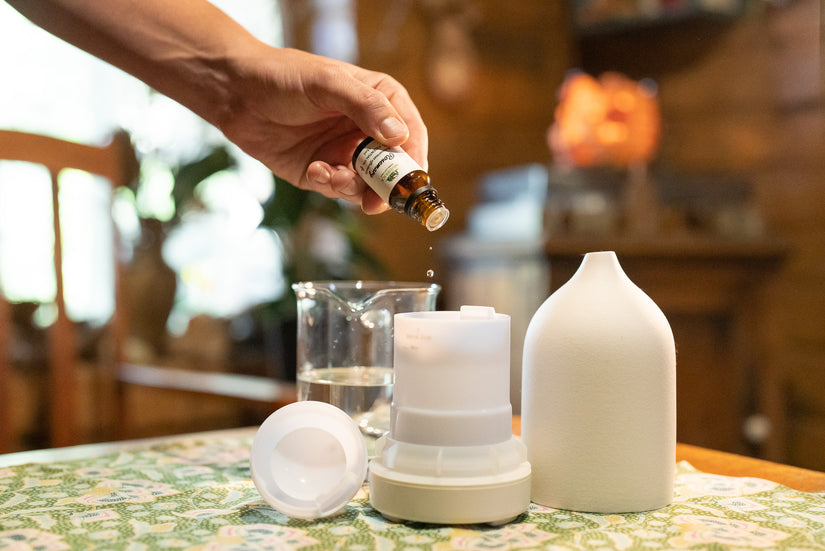
There are over 100 different essential oils, each with their own physical, mental, and emotional benefits. These healing oils provide a wide range of health benefits, including anti-inflammatory properties, insomnia management, and anxiety & depression relief. But with so many to choose from and different application methods for each, you may be wondering how to use essential oils properly.
To maximise the benefits, you must know how to use essential oils topically, via diffusion & inhalation, and other ways around your home. This article will cover the basics of essential oils, how to use them to heal your body & mind, and even when to avoid them.
The basics for using essential oils
Essential oils are made with a steam distillation process, using steam to pull aromatic oils from plants and package them in bottles; they’re highly concentrated, so a little goes a long way.
Some oils are meant for topical use, whereas others can be ingested or inhaled. You must understand how to use essential oils for each case, whether it's treating allergies, relieving headaches, or any of the other applications.
Always use a carrier oil for topical applications
Because essential oils are incredibly concentrated, they can cause irritation or other adverse reactions if used alone. You must dilute them with a carrier oil when applying to your skin in order to avoid adverse side effects. Common carrier oils include coconut, olive, jojoba, argon, and sweet almond oil.
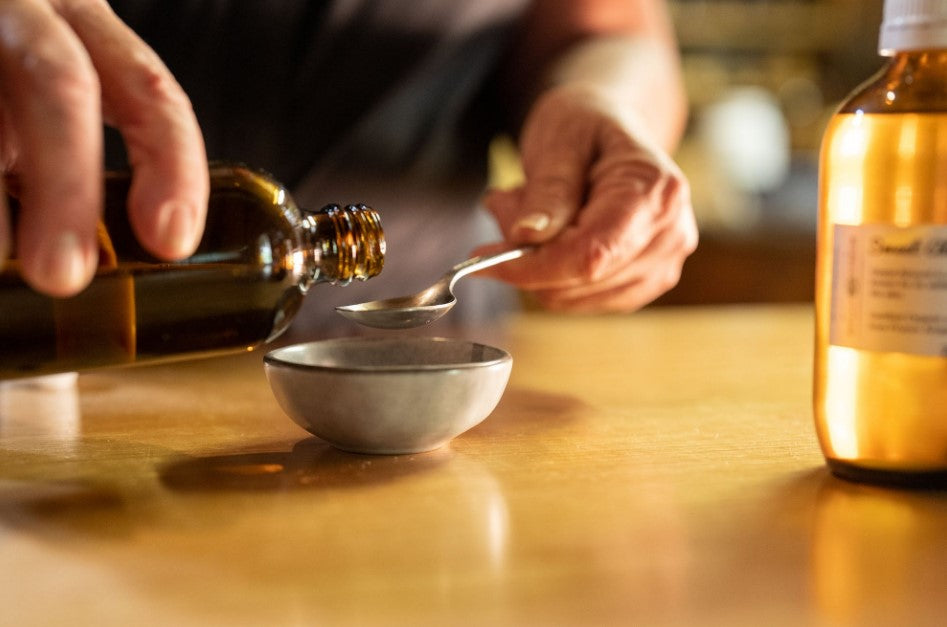
Carrier oils have numerous benefits aside from reducing irritation. According to a 2019 study, many carrier oils are composed of molecules similar to the sebum found on human skin, which improves the skin’s absorption of the oil. The same study found that carrier oils like aloe vera and jojoba oil can enhance essential oils’ antimicrobial properties.
The recommended concentration for essential oils is 3% or roughly three drops of essential oil per teaspoon of carrier oil. When testing a new oil on your skin, we recommend patch testing with a weak concentration to see how your skin reacts. You can progress onto stronger concentrations, but if you have an adverse reaction, it’s important to stop using the mixture immediately.
Essential oils aren’t water-soluble, meaning they will float to the surface when mixed with water. Water-based essential oil mixtures will harm your skin, so you should always use carrier oil for topical applications.
Follow the instructions below for preparing carrier oil mixtures.
-
Topical use - Patch test your chosen carrier oil on a small patch of skin and wait 24 hours. If you notice any redness, inflammation, or acne around the area, you must choose an alternative carrier oil. If your skin accepts the carrier oil, proceed with making a 3% essential oil mixture.
-
Diffuser - Diffusers are one of the most common delivery methods for essential oils. They break essential oils down into small molecules and disperse them into the air with a natural fragrance. Check the instructions on your diffuser before adding any type of oil. Often, you’ll use water in place of carrier oil to avoid damaging the heating element or diffuser.
- Humidifier: Like a diffuser, humidifiers require a water-based essential oil mixture. Double-check the instructions on the oil bottle to make sure that it’s safe for inhalation.
Start gradually
When using essential oils for the first time, test them in small amounts. Apply a small amount of the mixture to your skin to see how you react. If you don’t experience redness, a burning sensation, or another adverse reaction, you’re ready to apply the mixture to a larger patch of skin. Remember, you can’t use all essential oils topically; you must read the instructions or research the oil before applying it to your skin.
If you’re using essential oil in a diffuser or humidifier, test it in a single room for a short period before moving it to your main living space. It’s best to use a large, well-ventilated room and keep your kids and pets out of the test area.
“Essential oils are highly-concentrated and affect everyone differently. It's important to begin by using a small dose and observing how your body responds,” says Deby Atterby, editor of Aromatherapy Today International Journal.
Follow the instructions
Certain oils are toxic when inhaled in large doses, whereas others will cause skin reactions if applied topically. Every essential oil is different, so you must follow the instructions on the bottle to use them properly.
Consider consulting your naturopath, holistic health provider, qualified aromatherapist, or doctor before using essential oils.
How to use essential oils in your home
There are many ways to use essential oils, even if you don’t have a diffuser. Results and benefits will vary from person to person, so it’s best to try various oils, delivery methods, and concentrations to see what works best for you. These are the most common ways to use the most popular essential oils, each of which can be adapted to suit your needs.
In an aromatic diffuser
Aromatic diffusers disperse essential oils into the air using a small pump, heat, or high-frequency vibrations. Follow your diffuser’s instructions to fill the tank with water and then add a few drops of essential oil.
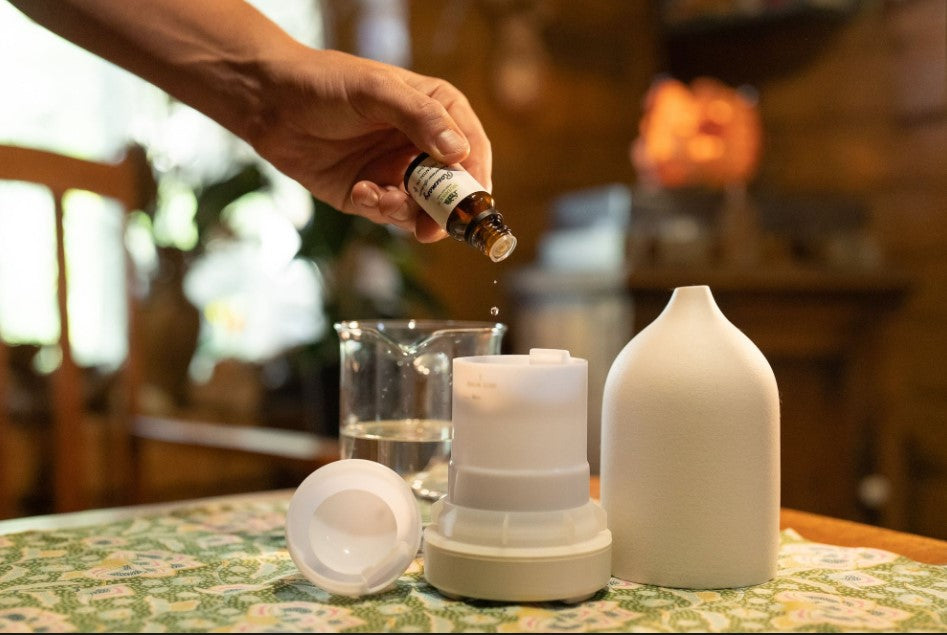
After turning the diffuser on, adjust the settings to fine-tune the amount of essential oil released into the air. Aromatic diffusers are an ideal way to promote relaxation, relieve stress, and improve your mood. But it’s important to remember that the oils affect each household member differently, so test them in a single room before introducing them to other rooms and family members.
Inhaling them directly
Oils that are safe to inhale, such as lavender, peppermint, and eucalyptus, don’t require a diffuser. You can hold the bottle under your nose and take a few deep breaths to enjoy the benefits. This method is the most effective way to treat headaches and reduce anxiety.

You can also add a few drops of essential oil to a bowl of steaming water and hold your face over the mixture. When using this method, cover your head with a towel to prevent the vapor from escaping and close your eyes to avoid irritation.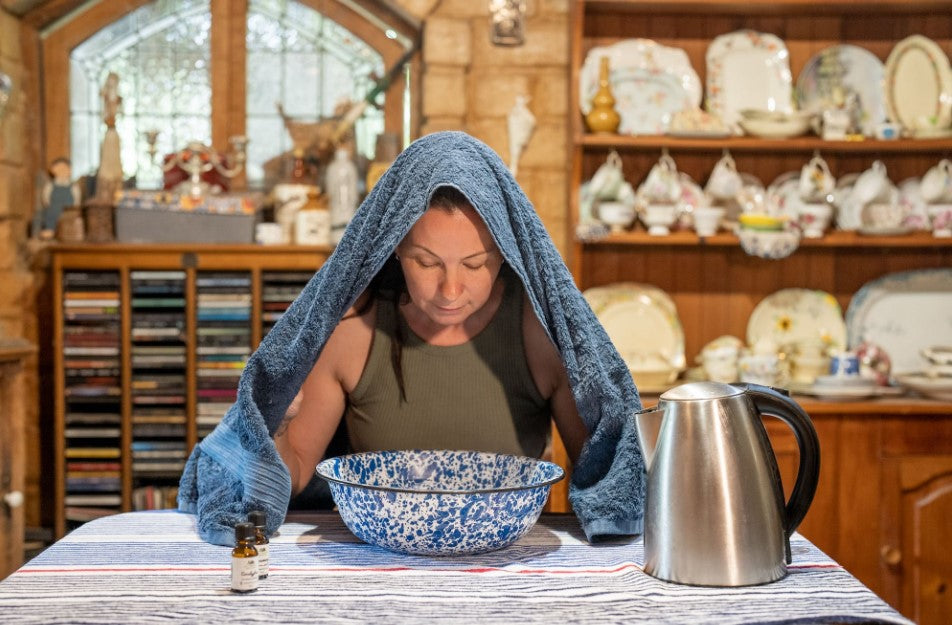
Dry evaporation
Another easy way to enjoy essential oils is by adding a few drops to a paper towel or cotton ball and holding it near your nose. You should wear gloves to prevent the pure oil from irritating your fingers.
On your skin
After mixing a small amount of essential oil with a carrier oil, you can apply it to your skin to treat eczema, reduce acute stress, and more. Read the instructions to ensure the oil is safe before using it topically. Gently massage the mixture onto the treatment area, avoiding sensitive areas like your eyes, nose, mouth, and genitals.
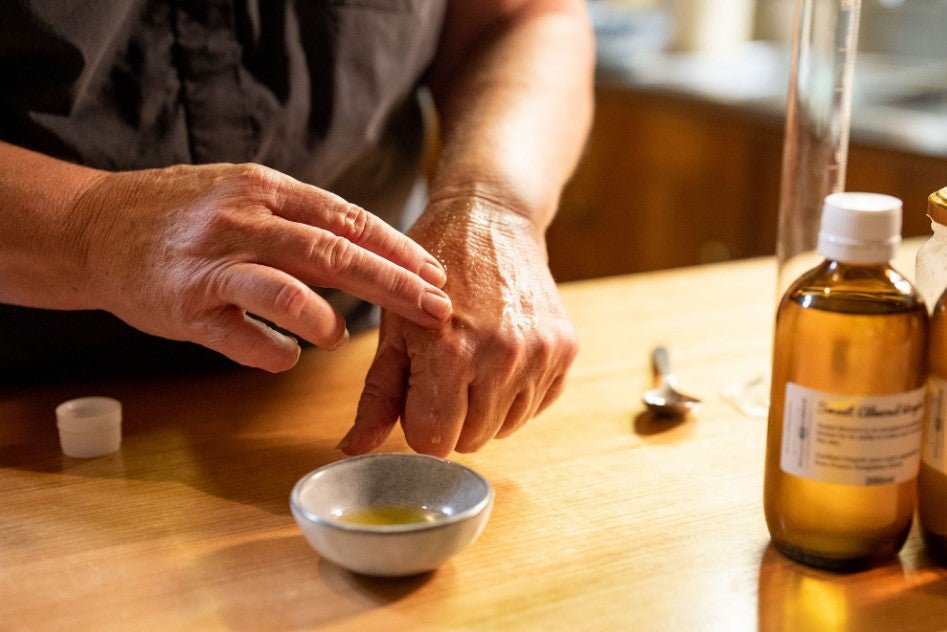
To avoid large-scale skin reactions, test the mixture on a small skin patch before using it on a larger area.
Bath and body products
After patch testing, rub the mixture onto your skin or scalp while in the shower and wash away with your normal soap and shampoo.
You can even add essential oils directly to your bathwater, but you’ll need to dilute it with coconut or jojoba oil. Other carrier oils may leave your skin feeling greasy if used in bathwater. Avoid adding pure essential oils to your bathwater, as they aren’t water-soluble and may come into contact with your skin, causing a potential reaction.
Humidifier
You don’t need carrier oils when using a humidifier, but make sure that your humidifier accepts essential oils. If so, add a few drops to the water tank to disperse the oils around your space. Start with two or three drops, and test it in a room you don’t use often. If all goes well, you can gradually increase the number of drops. Don't exceed 12 drops per 400 ml of water.
Cleaning
A 2017 study confirms that many essential oils have antimicrobial and antibacterial properties. You can use these germ-fighting agents to freshen your laundry by adding a few drops of essential oil to your laundry detergent or adding a few drops to vinegar for a multi-surface cleaner.
To test a variety of oils and methods, check out our curated packs of essential oils.
When not to use essential oils
Avoid certain oils during pregnancy
Pregnant women should avoid all essential oils during their first trimester. However, some are safe to use in later trimesters.
Many believe pregnant women should avoid cinnamon oils. Per the National Association of Holistic Aromatherapy, women should also avoid the following essential oils while pregnant or breastfeeding: aniseed, basil, birch, camphor, hyssop, mugwort, pennyroyal, tansy, tarragon, thuja, wintergreen, wormwood, rue, oak moss, Lavandula stoechas, parsley seed, sage, and hyssop.
There are some essential oils that are safe to use during pregnancy and labour, such as frankincense, chamomile, and neroli, but it’s important to speak with your healthcare provider before using them.
Don’t use oils around your pets
Certain essential oils, such as eucalyptus, tea tree, cinnamon, citrus, and peppermint oil, are toxic to dogs and cats. In fact, most concentrated essential oils can cause instability, depression, and low body temperature if applied directly to a dog or cat’s fur. Essential oil ingestion can cause vomiting, diarrhoea, depression, or death in cats and dogs.
Even oils that aren’t toxic to pets can make them uncomfortable because of their acute sense of smell. Avoid using essential oil diffusers or humidifiers in rooms that your pets can access.
Don’t use oils around babies or toddlers
Babies and toddlers have more sensitive skin and weaker livers than adults, making them more susceptible to toxic concentrations of essential oils. The ingestion of these oils by younger children and babies can result in vomiting, coughing, seizures, or death.
Some studies suggest certain oils can be used to treat acute respiratory diseases and other illnesses in children. Still, it’s crucial that these treatments only be carried out by medical professionals.
Don’t use oils if you have certain pre-existing conditions
Those with liver or kidney disease should avoid essential oils high in phenols, such as thyme, rosemary, and oregano. These can irritate the skin and potentially worsen the condition. Those with seizure disorders should avoid essential oils high in ketones, such as rosemary and sage, which can be toxic to the nervous system.
Those with severe allergies should consult a healthcare professional before using essential oils.
Essential oils have numerous benefits, from treating physical ailments to improving well-being and even cleaning your home. As you learn how and when to use them, you’ll be able to maximise their health benefits.



